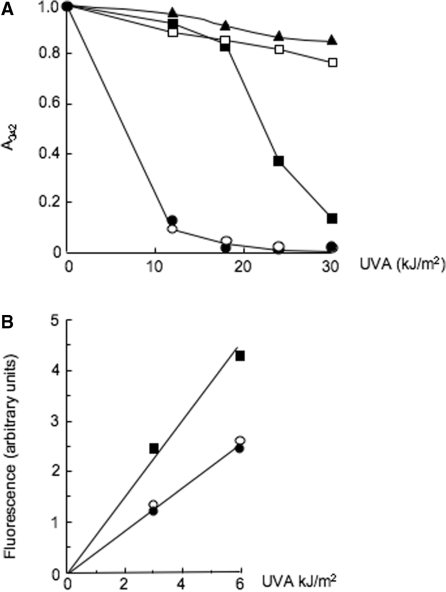Figure 5.
Ascorbate protects against oxidation. (A) Protection of 6-TG against photochemical destruction. The 6-TG (0.1 mM in aqueous solution) was irradiated with the doses shown in the presence of different concentrations of ascorbate. Photochemical destruction of 6-TG was monitored by the reduction in A342 spectrophotometrically. (open circle) no ascorbate (filled circle) ascorbate:6-TG 3: 1 (filled square) 12: 1 (open square) 25: 1 (filled triangle) 100: 1. (B) Protection of DNA 6-TG. A 11-mer oligonucleotide (1 µM) (CAGXAATTCGC where X = 6-TG) was UVA irradiated in the presence of ascorbate as indicated; 0 µM ascorbate (filled square), 10 µM (open circle) or 20 µM (filled circle). Conversion of 6-TG to GSO3 in the intact oligonucleotide was monitored fluorimetrically (λex 320 nm; λem410 nm).

